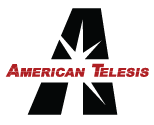Business Continuity Planning is near the top of every telecom and IT manager’s list of concerns. There are numerous ways to implement solutions that protect the trading floor environment, but some of those options can be cumbersome to implement and manage. Carrier re-direct options within the POP are very useful, but circuit lists are often hard to keep updated and system wide testing can only be done out of normal trading hours. New technologies such as forked ring downs can solve some of these problems and offer trading floor environments the resilient voice communications solutions that they need, regardless of the size of the firm. In the past, one of the best ways to backup trader voice lines was to implement some sort of re-direct system. In this scenario, the carrier installs T1/T3 facilities to a primary site and to a backup site. ARDs, MRDs, etc. are delivered over the T1/T3 facility going into the primary site. In the event of a trading floor disruption, the trader voice lines can be re-directed off of the primary T1/T3 facilities onto the backup T1/T3 facilities. Once the primary trading floor is restored, the trader voice lines can be directed back along the primary path.
This solution does work. It can be tested on a quarterly basis to ensure the viability of the system and to ensure it meets the needs of the customer. However, it can be cumbersome to manage. In many cases, only the high priority trader voice lines will be routed to the backup site. In the case where the customer has hundreds or thousands of lines, the simple determination of which lines should be re-routed can be an overwhelming task. With an ever-changing list, it is nearly impossible to make sure that the carrier has an up-to-date listing of circuits that need to be re-routed. Verification of the accuracy of the new mapping is even more worrisome because the backup is rarely if ever used. There is no simple and efficient way to test each trader voice line to truly verify that each and every distant end location is correct. This is because most BCP testing is done after-business business hours or over a weekend when there is no one to answer the call at the distant end allowing for true verification that all lines are mapped correctly.
Forked ring downs offer the trading floor environment a new option that will solve some of these problems. Forked ring downs
simultaneously deliver a call to multiple locations. In this scenario, the customer has T1/T3 facilities installed from American Telesis to both their primary and backup sites. The customer then decides which trader voice lines are critical and notifies American Telesis.
Those lines are then setup within the American Telesis network to be forked between both the primary and backup sites. When
the distant end goes off-hook – the line rings at both the primary site and the backup site at the same time. The first to answer the line owns the call until both sides go back off-hook. The customer is no longer forced to test or use the backup lines only in limited testing windows or under the worst-case scenario when the primary trading floor is unusable. Instead, verification of the usable lines can happen at any time. In fact, the backup trading floor can be a live trading floor, allowing the customer to split the traders/brokers between the two sites at any time. This not only presents a stronger trader voice line backup option, but also allows the customer to productively use the backup site, gaining more return on their investment in the technology needed to run that backup site.
The American Telesis forked ring down application does not require additional equipment at the customer site. The T1/T3
facilities coming into the customer site can still terminate into a channel bank, a DLIC card or even a customer owned DACS. The forking is done within the American Telesis private network. This allows for a simpler design in the initial phase of deployment. I the future, American Telesis will provide an option that does require the installation of a router at the customer site. This will further enable the IP capabilities of the product. In particular, it will allow for more circuits to be put on a single T1, which will amount to cost savings into the customer backup sites.
Experience the professional company that exceeds your expectations.
